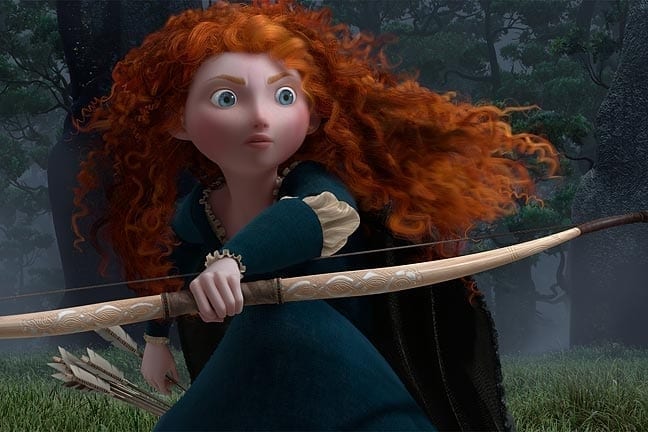The other day, I went to get a manicure and the technician said I reminded her of a celebrity. “Julianne….” she trailed off, blanking on the last name as she stared at my red hair. “Moore?” I said. She nodded profusely. I get this all of the time. It doesn’t matter that Julianne Moore and I look completely different. We both have red hair and therefore look alike.
Funny, I never see the same thing happen to blondes and brunettes. But I guess I should be happy that society no longer lumps us ginger-haired gals into those all-too-common stereotypes—from being called the “unwanted, redheaded stepchild” to making the assumption we’re all seductive Jessica Rabbit-types. (Though there are still guys who dare to ask if the “carpet matches the drapes.” Cringe.)
RESEARCH: Redheads Feel More Pain
Now there’s the animated movie “Brave,” which opens today: The lead female character, Merida, has a beautiful explosion of bright red hair. Sure, she’s described with the usual adjectives associated with redheads—“passionate,” “fiery” and “headstrong”—but most of all, she’s brave. And chances are, lots of little girls are going to be influenced by this strong character and proudly donning bright red wigs come Halloween.
There’s also been a recent surge of strong redheaded actresses on TV and film (some natural born, some bottle-born), including Amy Adams, Emma Stone and Jessica Chastain. Nearly every hit TV show has a redheaded character these days: from Joan on “Mad Men” (Christina Hendricks), to Jessica on “True Blood” (Deborah Ann Woll), Emma on “Glee” (Jayma Mays), Julia on “Smash” (Debra Messing) and Lily on “How I Met Your Mother” (Alyson Hannigan).
READ MORE: Beauty, Inside & Out with Christina Hendricks
While watching an hour-long TV show recently, I noticed at least three different commercials featured redheads—something I never saw growing up. We’re everywhere these days, even though we apparently make up only about 2 percent of the world’s population.
In other words, we’ve gone mainstream.
Like Merida in “Brave,” I was born with bright red-orange hair—a shade that seemed to defy nature, along with fair skin and freckles, a gift from my Irish father. There was no blending in with this color. By junior high school, the shade thankfully subsided to a more palatable, but still comment-eliciting, strawberry blonde. But growing up in L.A. and surrounded by a sea of sun-kissed blondes, it was hard not to feel self-conscious about my coloring. I didn’t want to be unique. I wanted to look like everyone else. So I squeezed lemon juice into my hair and used Sun-In to make it more blonde. And since sun tanning was futile—I would only burn and get more freckles—I used to wish that all of my freckles would somehow magically morph together to form a tan.
READ MORE: Hollywood Goes Red
I was too young to realize that unique is just another word for special. I also didn’t realize that red hair doesn’t last forever and fades as you get older. It would take growing up and going off to college in Boston (where there was no sunshine to lighten my locks) for my hair to become more brown than red.The fire disappeared. And I was surprised to realize how much I missed it.
My red tresses were not only tied to how I felt about my own identity; it was a big part of my identity (my mom was so upset over my suddenly darker mane that she actually thought I’d dyed it brown). I eventually started getting professional highlights to help put back some of that red I’d once wished away.
After losing most of my red hue, I finally saw my hair color for what it was—rare and special in its own right.
READ MORE: The Best Red for Your Skintone
Of course I’ll occasionally toy with the idea of trying on another color for size only to find myself surprised by just how protective my family, friends and even my colorist are of my crimson locks. I once asked my long-time colorist, Carrie McCard at Rita Hazan Salon, to dye my hair a pretty chestnut brown. She refused. “You’ll look like everyone else!” As a teenager, I would have welcomed those words, but as an adult, I realized in doing so I’d lose my most unique feature—something I now embrace wholeheartedly.
My husband was born with auburn hair—though, like me, his red hair turned brown years ago, and now his red flecks only make an appearance when he grows a beard. And now I’m pregnant with twin girls, which means there’s a good chance they’ll inherit our distinct shade. If they’re lucky enough to be born red, I’ll know exactly how to help them love and accept every fiery strand on their precious, beautiful heads.




































